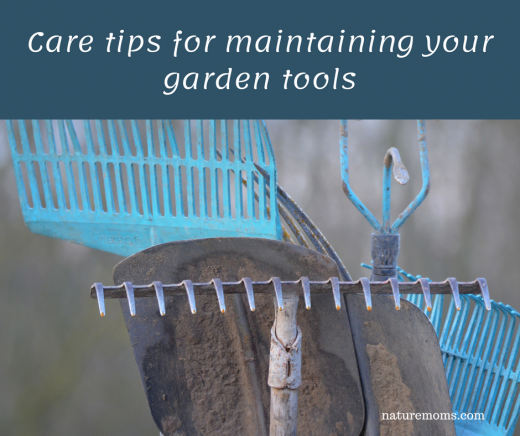Whether you’re a professional gardener or just a casual hobbyist who grows a few vegetables and flowers in their patch of earth, you can’t perform the various tasks associated with gardening without tools – shears, pruners, shovels, edgers, trimmers – the list goes on. One thing they all share in common though: you have to keep them in shape if you don’t want to be purchasing a replacement every couple of months – this is especially true for the tools that see frequent use. Leave them outside in the dirt all winter and you will likely be buying new ones in spring.
Here are some tips for keeping your gardening implements in tip-top shape, so you can use them safely and efficiently to keep your garden neat and trim time and time again.
Store in a sheltered place
Do not make the mistake of leaving your tools outside in the dirt after you’re done using them. Even if there is no risk of rain where you live, they could be exposed to ambient moisture overnight that could lead to rusting and corrosion. Even if you live in a desert, the dust blowing around would make its way into the screws and joints, causing them to jam even if you’ve oiled them up. In fact, prolonged exposure to direct sunlight could even lead to damaged paint!
Besides these environmental factors, there is also the risk of someone stealing them – especially if you’ve got an open yard. The smart way is to store them in a garden shed (and if that isn’t an option, a storage locker inside your house or garage) – you will be ensuring their longevity in more than one way.
Clean after every use
No matter how fleetingly you have used the tool, make certain that you clean it up afterward. If it’s a pair of shears, wipe them clean with a piece of cloth; if it’s a rake or a shovel, wash off all the accumulated dirt with a water pipe; if it’s a grass trimmer, make sure that there aren’t any stray blades of grass clogging its mechanism – you get the idea.
While cleaning up after every gardening session may initially feel like a chore, it keeps you well clear of the risk of laziness, where you neglect it for a couple of times and then adopts a ‘why bother’ attitude which eventually leads to a tool breaking down or getting jammed at a critical time.
Some items that can help you keep your tools clean include clean rags, iron wool, plastic brush, and a non-corrosive stain remover. Also, make sure you’ve got an effective soap bar for cleaning the grease and dirt off your own hands!
Regular oiling
Tools such as pruning shears need more than just dusting and wiping to be kept in shape – they have a tendency to develop rust from the sap their blades are exposed to from all the plants they cut. After you’ve cleaned their nooks and crannies from general dust and debris using a brush, wash them with soap and carefully dry them – next, simply apply lubrication oil, no more than a few drops.
Note that it is important that you don’t use any petroleum-based oil since this would transfer into your soil by way of your tools and could affect the health of the plants. Linseed oil, derived from flax seeds, can serve as an excellent non-petroleum based lubricant for this purpose.
To minimize rusting even further and keep your tools as sharp as possible, fill a bucket with dry, clean sand and pour a few drops of the lubricating oil into the bucket so that it becomes slightly moist (but no more). Once you call it a day, push the blades of your tools into this bucket – the sand will keep them sharp, and the oil will keep them rust-free!
Sensible usage
Understand that there are specific situations for using each tool, using them in applications they are not designed for may lead to less than desirable results or even total breakdown of the tool itself. For instance, it is a bad idea to use pruning shears to trim excessively thick branches – you’re going to need something more heavy-duty e.g. a chainsaw (you can read more about those here). Similarly, trying to use a motorized edge trimmer to brush away thick hedge grow will result in failure unless you use strong blades.
So now you see that there isn’t rocket science involved in keeping tools ready for action in your garden – just some punctuality and common sense. One final piece of advice to get the most out of any tool you purchase – make sure you get the best one you can afford. This may seem obvious, but many of us tend to get cheaper tools to save a few bucks, not realizing that they are invariably less durable and will break down after fewer uses, costing more in the long run.



